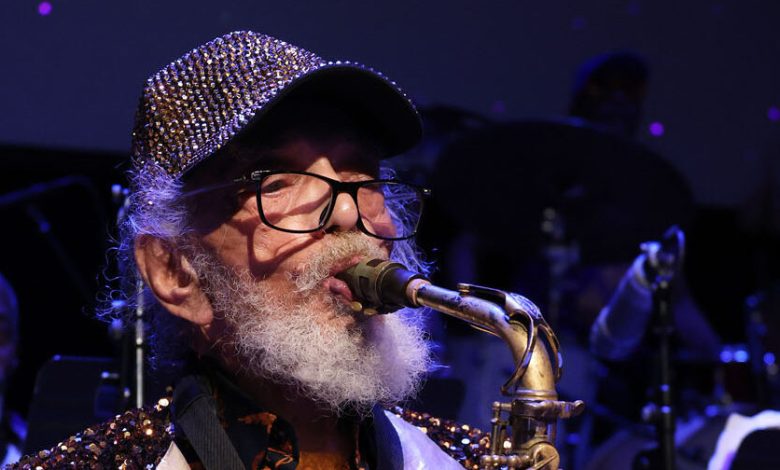At 100, the Intergalactic Jazz Hero Marshall Allen Is Still on a Mission

In late June, the Sun Ra Arkestra was onstage at Roulette in Brooklyn, swinging its way through “Queer Notions,” a jaunty big-band tune by the saxophonist Coleman Hawkins. The rendition hewed closely to the relaxed, seesaw riffing of the original, recorded by Fletcher Henderson and His Orchestra in 1933. But there was one prominent difference: the barrage of bleeps, whooshes and wobbly theremin-like tones emanating from an EVI — short for electronic valve instrument — played by Marshall Allen, the multi-instrumentalist and longtime Arkestra mainstay who had recently celebrated his 100th birthday.
Allen’s longevity onstage would be noteworthy on its own. But when you take in an Arkestra gig — watching Allen repeatedly leap to his feet to solo, resplendent in a gold-sequined cap and vest — his endurance is mind-boggling. Both at Roulette, where the ensemble played the concluding set of the Vision Festival in honor of Allen’s centennial, and during a trio performance at the Brooklyn Music School a few days earlier, he wasn’t merely an eminent elder but a mirthful dynamo. His contributions on EVI and alto saxophone often clashed brilliantly with the surrounding textures, embodying the joyous eclecticism that helped make Sun Ra — the pianist, composer and Afrofuturist thought leader who helmed the Arkestra from the mid 1950s until his death in 1993 — one of the 20th century’s most prescient musical visionaries.
Much like Sun Ra’s own keyboard work, Allen’s art is a study in extremes. His alto saxophone phrases are mini eruptions: Tensing his shoulders as he blows and raking his right hand up and down over the keys, he produces squeals, snarls and honks that register as Expressionist gestures as much as avant-garde sounds. Even set against the alto work of a musician one-fourth his age — as on the tribute LP “Red Hot & Ra: The Magic City,” where Allen appears alongside the rising star Immanuel Wilkins — his sonic splatters still hold a bracing power.
But focusing on Allen’s more outré qualities can obscure just how much history he embodies. Enlisting in the Army during World War II, he played clarinet in a military band and, after an honorable discharge, studied at the Paris Conservatory and recorded with the bebop luminary James Moody. When he joined up with the Arkestra in Chicago in 1957, it was a compact, immaculately swinging big band, with a sound rooted in both Sun Ra’s admiration of giants like Fletcher Henderson and a pervasive Space Age aesthetic, manifesting in shiny costumes and sung slogans like “We travel the space ways/From planet to planet.” Allen was drawn in, he recalled to The New York Times in 2020, by the leader’s lectures on space and “all this other stuff: ancient Egypt and the Bible.”
The Brooklyn Music School performance — where Allen was joined by fellow Arkestra members Tara Middleton (vocals) and Farid Barron (piano) — served as a reminder of his firm grounding in a bygone era. Though the set featured plenty of jump-scare saxophone and echoey EVI tones, there were also roomy stretches of poignant lyricism. On “Sometimes I’m Happy,” a 1920s-era standard that Sun Ra often played, Allen answered Middleton’s lines with soft, ruminative phrases that strongly evoked Johnny Hodges, whose legacy is as closely intertwined with Duke Ellington as Allen’s is with Sun Ra.
